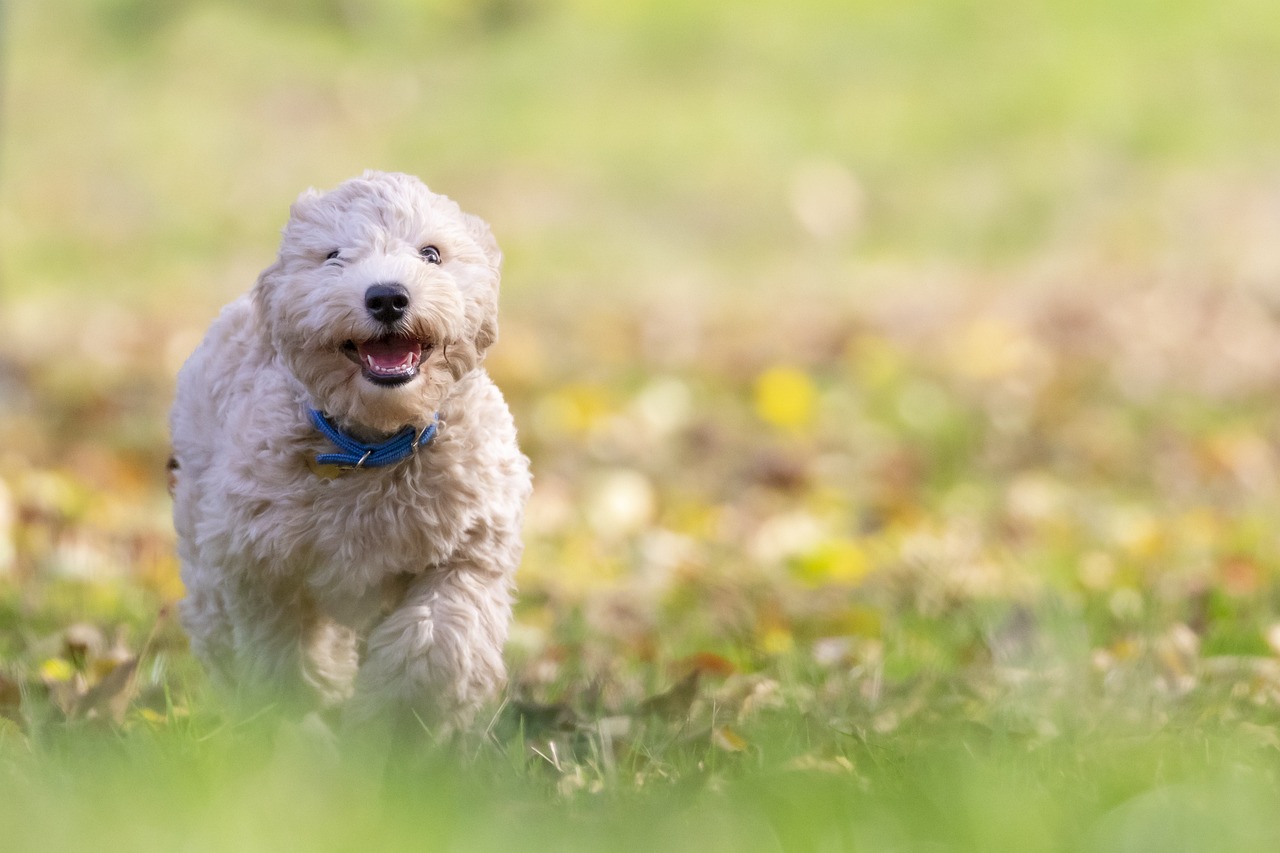Master the Art of Canine Discipline: Key Dog Training Tips
Introduction
Dog training, an essential part of responsible pet ownership, seeks to foster understanding between humans and their furry companions. Emphasizing obedience and socialization, it enhances the canine’s cognitive abilities and general behavior (

). With effective dog training, a pet becomes more confident, understands boundaries, and can interact harmoniously with humans and animals alike. This article offers comprehensive insight on dog training techniques to guide you in this rewarding journey.
Brief explanation on the importance of dog training
Training forms the foundation of effective communication between canines and their human companions. Essential not simply for obedience, it safeguards dogs from potential harm, ensuring their wellbeing. It’s critical in maintaining an organized household, rectifying destructive behaviors, and fostering a balanced relationship. Additionally, it aids in socialization, enhancing the dog’s interaction with their environment. Above all, training serves to strengthen the bond between owner and pet, rendering it invaluable.
Understanding Canine Behavior
Understanding canine behavior is foundational in successful dog training. Dogs communicate primarily through body language, which is why keen observation and interpretation is essential. Key cues include ear position, tail movement, eye contact, and vocalizations. Canines show their feelings, intentions, and reactions through these cues. By comprehending your dog’s behavior, you foster a harmonious coexistence, providing a base to effectively guide and shape your dog’s actions through training methods.
Dog's Natural Instincts
Understanding a dog’s natural instincts is crucial for effective training. Dogs, as descendants of wolves, maintain inherited traits which drive behaviors. These include the instinct to hunt, sniff out food, mark territory, and establish dominance. Recognizing these instincts can foster improved communication between dogs and their owners. Successful training involves working with these instincts, not against them, allowing for proactive behavior management while strengthening the dog-owner bond.
Dog’s Cognitive Abilities
Dogs possess notable cognitive abilities that aid them in training. These include perception, memory, and problem-solving skills. A dog’s perceptual ability allows them to interpret sensory information, enhancing their responsiveness to commands. Memory aids in recalling past experiences, important for consistency in training. Their problem-solving capabilities enable them to grasp and apply new concepts. Understanding these cognitive traits is pivotal to fostering a strong training relationship.
Understanding Dog Body Language
Understanding a dog’s body language is key to successful training. Dogs communicate primarily via their body, and their actions often signal their emotional state. Tail wagging might express pleasure or stress, while flattened ears may signal fear. Moreover, narrowed eyes or teeth bare signify aggression. Similarly, a relaxed body posture and soft gaze often indicate contentment. Recognizing these signals promotes improved communication and a healthier relationship between you and your furry friend.
Why Training Your Dog is Essential
Dog training is an integral part of pet parenthood. This practice not only refines your pet’s behavior but also strengthens the bond between you and your canine. Training aids in managing destructive behaviors, fostering social etiquette, and ensuring dog safety. It harnesses your dog’s instincts, letting them become more adaptable and happier. Moreover, a trained dog can help in various tasks, making them an effective help in different aspects of life.
Building Communication and Strengthening Your Bond
A solid bond with your dog emerges from good communication. Training sessions provide a prime opportunity for this. By using clear, consistent commands, you advance mutual understanding. Reward positive behaviors to encourage repetition. Immediate feedback is crucial, as dogs live in the moment. Understanding your dog’s signals, demeanor, and body language is equally important. This reciprocal comprehension builds trust and strengthens your bond, leading to a happier, more obedient dog.
Managing Your Dog's Behavior
Managing your dog’s behavior effectively requires understanding canine psychology and communication. Training should encourage good behavior while correcting problematic ones, offering rewards for compliance. Regular exercise also plays a vital role, reducing boredom and destructive habits. Similarly, maintaining consistency is essential to prevent confusion. Lastly, if troubling behaviors persist despite efforts, consider seeking professional help. Remember, patience and understanding are integral in shaping a well-behaved canine companion.
Keeping Your Dog Safe
Ensuring your dog’s safety is paramount at all times. Training plays a vital role through teaching obedience and ensuring they respond to commands effectively. Dogs should be taught to sit, stay, and come when called. These basic commands can prevent danger in various situations. Furthermore, ensure your dog is microchipped and its vaccinations are up-to-date. Lastly, securing your home, including garden and balcony areas, can prevent unnecessary accidents and ensure your dog’s safety.
Mental Stimulation for Your Dog
Mental stimulation is as crucial as physical activity for your dog’s overall health. Engaging games like puzzle toys, hide and seek, or learning new tricks generate mental challenges. Patience and consistency are key when teaching them new skills. Mental exercise combats boredom and reduces destructive behaviors. Remember, bored dogs get into trouble, but a mentally stimulated pup is a happy pet. Additionally, mental stimulation deepens your bond with your furry friend.
When to Start Training your Dog
Ideally, dog training should commence during puppyhood. A pup between 7 and 8 weeks old is primed for learning, making it an excellent time to start fundamental commands like ‘sit’, ‘stay’, or ‘come’. Despite this, it’s never too late to train a dog. Older dogs can develop good habits and become obedient too with patience and consistency. Therefore, irrespective of your canine’s age, a commitment to regular training sessions produces the best outcomes.
Training Puppies
Training puppies is essential for a happy, well-behaved dog. It entails teaching the pup obedience, manners, and proper socialization skills. Positive reinforcement like treats, praise, and games work best. Puppy training also includes toilet training, leash instruction, and curbing undesirable behaviors. Patience and consistency are vital for effective training. Never resort to scolding or physical punishments. Instead, provide clear directions and nurture your puppy in a loving environment.
Adult Dog Training
Training isn’t reserved for puppies alone. Adult dogs can learn new tricks, habits, and obedience commands with consistent, positive reinforcement. Ideally, training should be a blend of basic commands, socializing, and behavior modifications. Unlike puppy training, adult dog training requires more patience and consistency due to established behavior patterns. A professional dog trainer may be beneficial for rectifying ingrained negative behaviors. Remember, an obedient, well-trained dog is a happier and safer pet.
The Importance of Consistency
Consistency is a cornerstone in dog training. It facilitates a clear and seamless communication between the trainer and the pooch. Deviation may cause confusion and hinder progress. Therefore, consistently practicing the same commands, using the right tone and treating your dog in a consistent manner instills discipline over time. In the long run, this leads to well-behaved dogs, reinforcing trust and strengthening the bond between you and your furry friend. Consistency is truly the key to successful dog training.
Popular Dog Training Techniques
Discovering the suitable approach to effectively train your dog requires patience, understanding, and practical tactics. The popular dog training techniques include Reward-Based Training, Clicker Training, Agility Training, and Positive Reinforcement. In Reward-Based training, treats are used as incentive, Clicker Training involves a sound-based reward system. Agility Training builds confidence in skittish canines, while Positive Reinforcement establishes a pattern of good behavior.
Clicker Training
Clicker Training is a proven method for effective dog training. This positive reinforcement technique uses a clicker, a small handheld device that emits a ‘click’ sound. The ‘click’ signifies a job well done, marking desired behavior and immediately following it with a treat. This creates a positive association and motivates your dog to repeat the behavior. The key to Clicker Training is timing and consistency; the ‘click’ must coincide with the desired action.
Reward-Based Training
Reward-Based Training is a powerful approach used in dog training. It entails acknowledging your dog’s desired behaviors with rewards such as treats or praises, thus reinforcing these actions. This method fosters better comprehension and willingness from your pet due to positive reinforcement. As the training progresses, rewards are gradually reduced until the good behavior become automatic. Utilizing Reward-Based Training can enhance your relationship with your dog and improve general obedience comportment.
Boundary Training
Boundary Training is a critical aspect of comprehensive dog training. It teaches your canine companion to stay within specific area limits, preventing unwanted wandering. The process employs reinforcement techniques, rewarding dogs for obeying boundary commands. Typical rewards can include treats, praise, or toys. Patience is important, as each dog learns at their own pace. By mastering boundary training, you can foster a more controlled, secure environment, enhancing the relationship with your dog.
Behavioral Training
Behavioral training for dogs is aimed at correcting habits such as aggression, fearfulness, or separation anxiety. It commences by understanding the triggers leading to these behaviors then strategically conditioning the dog to respond differently. Techniques include positive reinforcement, using rewards like treats or praise, juxtaposed with corrections. Careful planning and consistency are essential in this process. Expert consultation may be needed in extreme cases. Be compassionate and patient, remembering training is a progressive journey.
Basic Commands Every Dog Should Know
Every dog owner should teach their pets these basic commands to ensure a harmonious living situation. “Sit” is the initial command to master, followed by “Stay”, to keep your dog safe and controlled. “Come” is crucial for emergencies or the ever-frequent squirrel chase. “Down” promotes calm behavior. Lastly, “Leave it” is vital to prevent your dog from ingesting harmful substances. Exploring these commands fosters optimal communication between pet and owner.
Sit Command
The sit command is a basic obedience command and a great place to start in dog training. Training begins by holding a treat close to your dog’s nose and lifting your hand up, causing the dog to sit naturally. As they sit, say “sit,” give them the treat, and share affection. Consistent repetition teaches dogs this command, fostering obedience and shaping polite behavior, and spills over into other aspects of dog training.
Stay Command
Training your four-legged friend to understand the ‘Stay’ command is crucial in promoting discipline and safety. It starts with a sit or down position, followed by a clear, firm ‘Stay’. Patiently wait, then reward your dog for their restraint. Repeating and gradually extending the waiting period helps embed the command. The ‘Stay’ command is not just an obedience exercise; it’s a life-saving skill, especially near traffic or during potentially dangerous situations.
Come Command
The ‘Come Command’ is a vital component of basic dog training. This command is essential for your dog’s safety, as it compels your pet to return to you when called. To successfully train your dog in the ‘Come Command’, patience and consistency are key. Start by using this command in a familiar environment. Gradually increase distractions. Always reward your dog for its correct response. Remember, repetition and positive reinforcement are your allies in this task.
Heel Command
The ‘Heel Command’ is a quintessential component in canine obedience training, promoting disciplined walking by your side. This command trains your dog to walk aligned with your left leg, neither crossing in front nor lagging behind. Effective implementation guarantees controlled strolls both on and off the leash, preventing darting or pulling. Establishing ‘Heel’ involves consistent voice commands, treats, and patience to build a habitual response. Remember, this learned behavior isn’t achieved overnight and requires consistent enforcement.
Dealing with Behavioral Problems
Addressing behavioral issues in dogs involves understanding the root cause and providing consistent responses. Redirecting inappropriate actions through constructive play or task-focused activities often proves effective. Obedience training using rewards or positive reinforcement techniques fosters desirable behavior. Behavioral problems fueled by fear or anxiety might necessitate professional counseling. Ultimately, patience and firm, gentle guidance enable our four-legged friends to overcome difficulties, improving their quality of life, and strengthening our bond with them.
Barking Problems
Excessive barking in dogs constitutes a real problem both to the dog owners and their neighbours. This phenomenon occurs due to various reasons, such as boredom, anxiety, or a response to environmental cues. Addressing barking problems demands a comprehensive, but sensitive training approach. Patience, understanding, and consistency are critical in tackling this issue. It involves teaching dogs to respond to certain commands, and gradually altering their responses to stimuli causing excessive barking.
Chewing Problems
Chewing problems in dogs necessitate patient, consistent training. Left unchecked, they can lead to property damage, and worse, health hazards for your pet as they can inadvertently ingest harmful objects. Identify the cause first—puppy teeth growing, stress, or boredom—to tailor the solution. Toys and chews can deter inappropriate chewing; specific training can infuse discipline. Always associate positive reinforcement with correct behaviour, gradually alleviating your dog’s destructive chewing habits.
Aggression
In dog training, aggression—a problematic behavior typified by threats, challenges, or attacks—demands careful consideration. It often emerges from fear or frustration and, if not addressed, escalates, jeopardizing human and animal safety. By employing positive reinforcement techniques, understanding the trigger factors, and consulting a professional where necessary, aggressive behaviors can be effectively curtailed. Remember, patience and consistency are key to reshaping behavior and building a harmonious bond with your canine companion.
Separation Anxiety
Separation anxiety in dogs manifests as excessively destructive or disruptive behavior when left alone. Triggers may include changes in owners, homes, or schedules. Training starts with gradual desensitization — short departures building up to longer ones. Distraction tactics like puzzle toys with treats can be helpful. Professional help may be necessary for severe cases. Remember, patience is key when training a dog struggling with separation anxiety.
Professional Help for Dog Training
When training your dog seems overwhelming, professional assistance can be invaluable. Certified trainers have expert knowledge about dog behavior and communication. They employ effective techniques designed for different breeds and temperaments, enhancing your pet’s learning process. Additionally, trainers provide comprehensive plans for home practice. Training services may offer private sessions, group classes, or boarding training. Investing in professional dog training will not only bring order to your home but also strengthen your bond with your pet.
When to Consider Professional Help
In dog training, you might reach a point where professional help seems required. This could be due to persistent behavior issues, aggressive tendencies, or perhaps your dog’s lack of responsiveness to home training. It’s also ideal to consult a professional if you lack the time or patience for training. Remember, professional trainers have extensive knowledge and skills to guide your pet and ensure its balanced growth and development.
Choosing the Right Dog Trainer
Selecting a dog trainer is a crucial decision impacting your pet’s behavior and well-being. Look for certified trainers who utilize positive reinforcement techniques. Verify their experience, knowledge, and approach align with your dog’s needs. Some trainers specialize in specific breeds or behavioral issues. Reviews from other clients provide valuable insights. Observing a class in action can give a clear impression of the trainer’s style and effectiveness. Trust your gut and prioritize a supportive, humane approach.
Advantages and Limitations of Professional Training
Professional dog training offers numerous benefits, including targeted instructional techniques and social interaction opportunities. However, it can be costly and requires substantial time commitment. Also, not all trainers may align with your preferred training methodology. Nevertheless, professional training can drastically improve your pet’s behavior and understanding, but it’s essential to weigh these factors and choose a compatible trainer for the most effective results.
Reminders and Tips about Dog Training
Training your dog requires consistency, patience, and positive reinforcement. Ensure sessions are short but frequent, maintaining intrigue and reducing fatigue. Always reward good behavior immediately to reinforce learning. Conversely, ignore unwanted actions, as dogs are keen to repeat actions that get attention. Employ vocal cues and hand signals for clearer communication. Remember, every dog learns at its own pace, so stay persistent and avoid punishing mistakes, to foster a successful training journey.
Patience is Key
Dog training is not instantaneous; it requires patience. A consistent, positive approach fosters trust and understanding, crucial to success. Throwing tantrums when your pet doesn’t obey immediately can damage this trust. Understand that dogs learn at varying rates; the training duration can differ. Stay calm, receptive, and maintain faith in the process. Eventually, your dog will respond to your commands. Remember, patience isn’t about waiting passively; it’s an active engagement in the training process.
Consistency and Routine
In dog training, maintaining consistency and establishing a routine are paramount. Dogs thrive on predictability, thus making your commands and actions consistent aids their understanding and skill acquisition. Consistency in reward and punishment is also crucial to avoid confusion. Additionally, a routine offers them a sense of security, promoting good behavior. Consistency and routine are thereby fundamental principles, shaping effective communication and fostering a stable, well-adjusted pet.
Positive Reinforcement
Positive reinforcement is a central pillar of effective dog training. The method rewards your dog when he exhibits desired behavior, such as obeying commands. The reward can range from treats, praise, or playtime, which stimulates your dog’s psychological well-being. By rewarding our canine companions promptly and consistently, we instill ‘good behavior’ patterns. When utilized appropriately, positive reinforcement can accelerate learning while fortifying the bond between you and your dog.
Considering Your Dog's Perspective
Understanding your dog’s viewpoint is integral to successful training. Imagine their world from a sensory view – predominantly smell, not vision. Their primary bonding happens through social connection. Grasp their motivations – is it toys, treats, praise? Realize their fears and anxieties. Step into their pawprints to communicate more effectively and train more empathetically.
Frequently Asked Questions
What is the best age to start training a dog?
The ideal age to start training a dog is as soon as it joins your family, which is typically around eight weeks old. Puppies have a short attention span but they are capable of learning from a young age. Basic obedience training and socialization should begin early to prevent any behavioral problems in the future.
What are the basic commands to teach a dog?
The five basic commands to teach a dog are “Sit,” “Stay,” “Down,” “Come,” and “Heel.” These commands provide a good foundation for ensuring your dog’s safety and maintain good manners. Other useful commands include “Leave it,” “Off,” and “Quiet”. It is important to use positive reinforcement techniques such as treats, toys, or praise to encourage your dog to follow these commands.
How long should a training session last for a dog?
Training sessions should be short and sweet, ideally around 15 minutes long. This can be repeated two to three times a day. Puppies and older dogs have a short attention span and may get bored or frustrated with longer sessions. By keeping training sessions short, you can keep them fun and productive.
How do I train my dog to be more social?
Start by gradually introducing your dog to new people, environments, and other animals. You can take your dog to public places like parks, outdoor events, or pet stores. Ensure you always have control over the situation to prevent any negative experiences. Remember to reward your dog for positive interactions with treats or praise to reinforce good behavior.
Why is my dog not responding to my commands?
This could be due to a number of reasons. Your dog may not understand the command, so additional training might be required. The command could also be associated with a negative experience. In this case, you may need to retrain your dog using positive reinforcement. Distractions in the environment can also prevent your dog from responding. In this case, try moving to a quieter location or closer to your dog.
What can I do if my dog is aggressive?
Aggressive behavior in dogs should be addressed with the help of a professional trainer or a behaviorist. They can help identify the root cause of the aggression and devise a training plan to correct it. It’s important to remember not to punish aggression with aggression, as this can exacerbate the problem. Always consult a professional if your dog’s behavior becomes a concern.
Conclusion
In conclusion, dog training is an essential practice for every dog owner aimed at improving the bond with their pets, enhancing pet safety, and ensuring a harmonious co-existence between pets and their environment. The process requires patience, consistency, and understanding of the dog’s behavior. It is clear that the benefits of training dogs go beyond mere obedience, creating well-adjusted animals that can interact properly with humans and other animals.
Moreover, it’s imperative to note that the method of training used significantly influences the outcome. Positive reinforcement has been identified as the most effective and ethical approach, fostering trust and encouraging good behavior. Regardless of the dog’s age or breed, proper training is achievable with the right strategies, techniques, and commitment. It’s never too late to start training a dog, and the benefits of doing so can create a lasting, positive impact on the pet-owner relationship.
<div class="wp-block-embedwrapper”>



